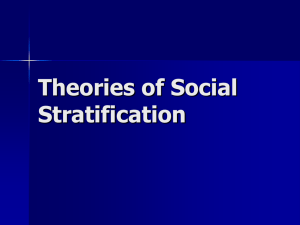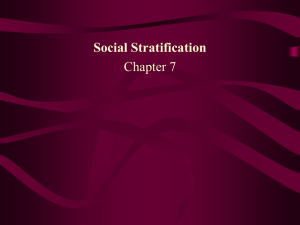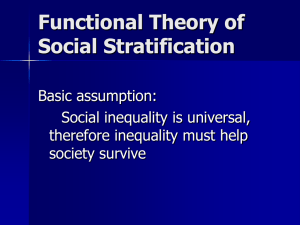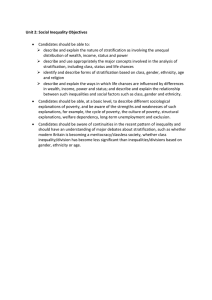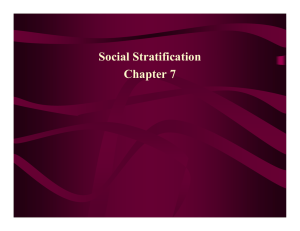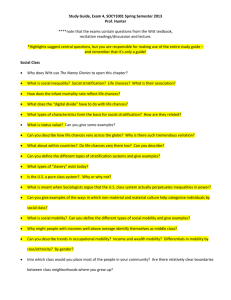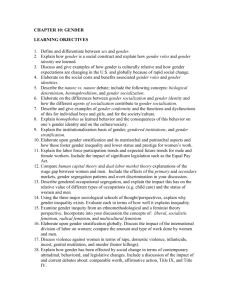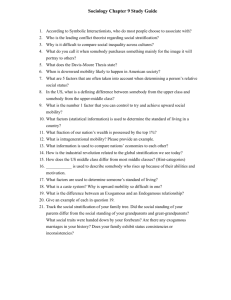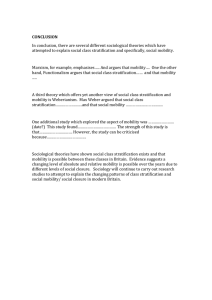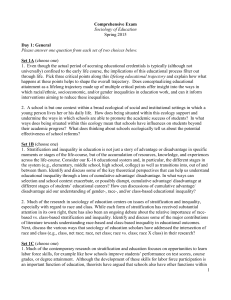The Master List of Sociology Terms
advertisement
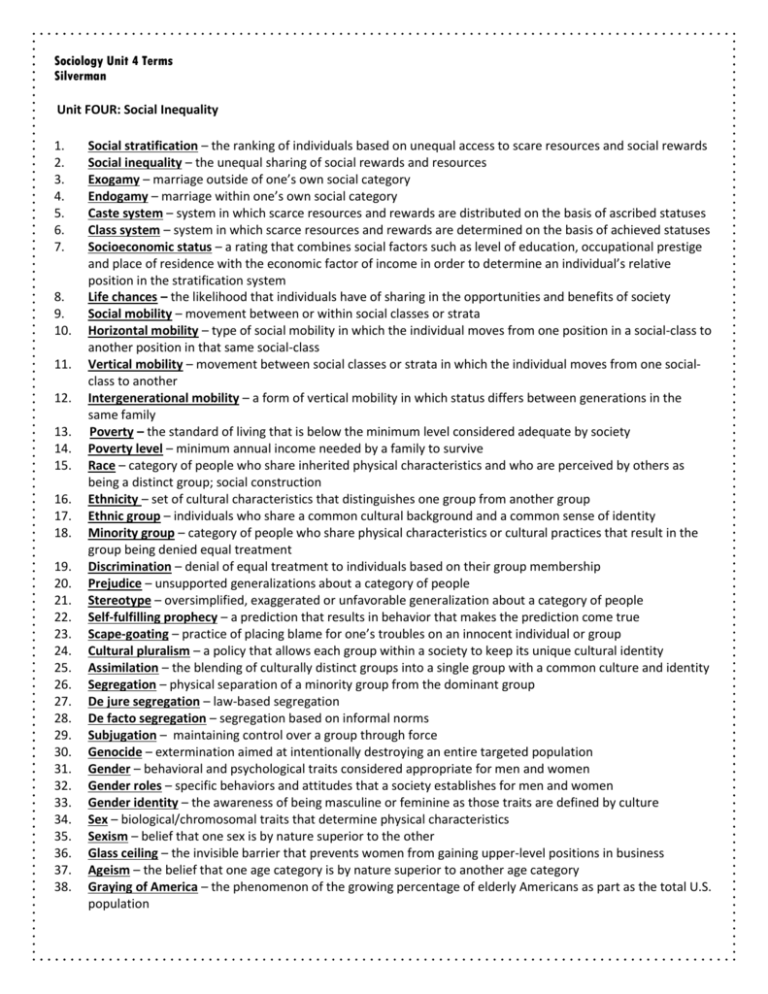
Sociology Unit 4 Terms Silverman Unit FOUR: Social Inequality 1. 2. 3. 4. 5. 6. 7. 8. 9. 10. 11. 12. 13. 14. 15. 16. 17. 18. 19. 20. 21. 22. 23. 24. 25. 26. 27. 28. 29. 30. 31. 32. 33. 34. 35. 36. 37. 38. Social stratification – the ranking of individuals based on unequal access to scare resources and social rewards Social inequality – the unequal sharing of social rewards and resources Exogamy – marriage outside of one’s own social category Endogamy – marriage within one’s own social category Caste system – system in which scarce resources and rewards are distributed on the basis of ascribed statuses Class system – system in which scarce resources and rewards are determined on the basis of achieved statuses Socioeconomic status – a rating that combines social factors such as level of education, occupational prestige and place of residence with the economic factor of income in order to determine an individual’s relative position in the stratification system Life chances – the likelihood that individuals have of sharing in the opportunities and benefits of society Social mobility – movement between or within social classes or strata Horizontal mobility – type of social mobility in which the individual moves from one position in a social-class to another position in that same social-class Vertical mobility – movement between social classes or strata in which the individual moves from one socialclass to another Intergenerational mobility – a form of vertical mobility in which status differs between generations in the same family Poverty – the standard of living that is below the minimum level considered adequate by society Poverty level – minimum annual income needed by a family to survive Race – category of people who share inherited physical characteristics and who are perceived by others as being a distinct group; social construction Ethnicity – set of cultural characteristics that distinguishes one group from another group Ethnic group – individuals who share a common cultural background and a common sense of identity Minority group – category of people who share physical characteristics or cultural practices that result in the group being denied equal treatment Discrimination – denial of equal treatment to individuals based on their group membership Prejudice – unsupported generalizations about a category of people Stereotype – oversimplified, exaggerated or unfavorable generalization about a category of people Self-fulfilling prophecy – a prediction that results in behavior that makes the prediction come true Scape-goating – practice of placing blame for one’s troubles on an innocent individual or group Cultural pluralism – a policy that allows each group within a society to keep its unique cultural identity Assimilation – the blending of culturally distinct groups into a single group with a common culture and identity Segregation – physical separation of a minority group from the dominant group De jure segregation – law-based segregation De facto segregation – segregation based on informal norms Subjugation – maintaining control over a group through force Genocide – extermination aimed at intentionally destroying an entire targeted population Gender – behavioral and psychological traits considered appropriate for men and women Gender roles – specific behaviors and attitudes that a society establishes for men and women Gender identity – the awareness of being masculine or feminine as those traits are defined by culture Sex – biological/chromosomal traits that determine physical characteristics Sexism – belief that one sex is by nature superior to the other Glass ceiling – the invisible barrier that prevents women from gaining upper-level positions in business Ageism – the belief that one age category is by nature superior to another age category Graying of America – the phenomenon of the growing percentage of elderly Americans as part as the total U.S. population 39. Baby-boom generation – collective term for the approximately 76 million children born in the United States from 1946 through 1 964 Dependency ratio – the number of workers for each person retrieving Social Security benefits 40. UNIT FOUR: ESSENTIAL QUESTIONS/STANDARDS Essential Questions: How does inequality impact the life chances of individuals in that society? How does race/ethnicity impact social structure? What roles do gender, age and race play in our behavior and interactions with each other? How do race and ethnicity affect group behavior? SSSocIC1: Students will analyze forms of social inequality. a. Explain how unequal distribution of power and resources affects the life chance of individuals in that society b. Analyze the sources and effects of stratification on the basis of social class; race and ethnicity; gender; age; and emotional, mental, and physical disabilities c. Analyze the sources of global stratification and inequality d. Evaluate the impact of global stratification and inequality on global relations
